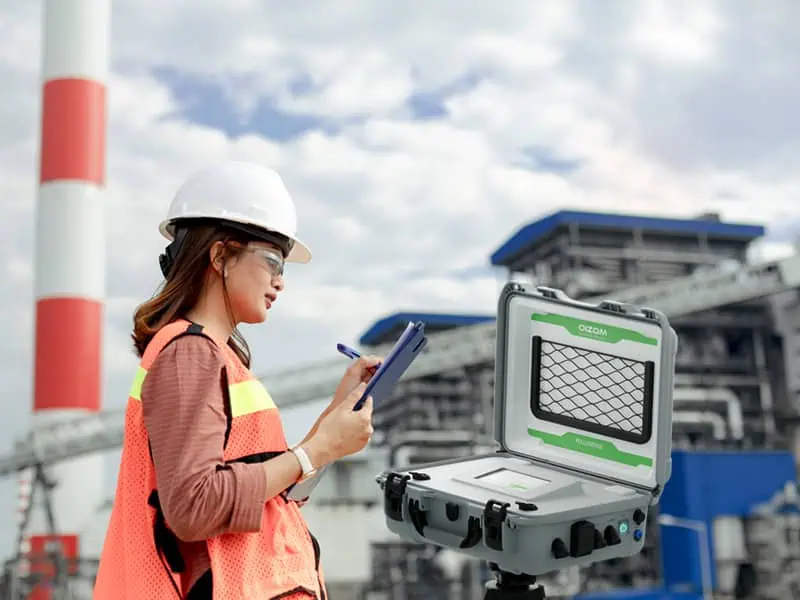Japan Enhances Armenia's Air Quality Monitoring with Real-Time Technology for Cleaner Environment

Japan Transforms Armenia’s Air Quality Monitoring with Advanced Technology
Revolutionizing Data Collection for Cleaner Air
Armenia recently took a transformative step in environmental surveillance with the installation of cutting-edge automatic measuring devices from Japan. These advanced systems have been deployed at three critical observation locations, representing a significant upgrade over previous arrangements. In the past, environmental records were distributed with extensive delays, sometimes spanning up to three days, and did not capture essential particulates or gases such as PM10, PM2.5, or carbon monoxide. With the recent deployment of Japanese equipment, a new era of immediate, precise, and comprehensive environmental information is beginning in the country.
The introduction of real-time monitoring technology reflects a global push for more robust networks that offer accurate, publicly accessible insights into ambient conditions. Conventional monitoring networks often suffered from slow reporting intervals and limited analytical scope, which made it challenging for both authorities and residents to assess risks or respond to pollution events. By instantly measuring fine particulates and hazardous gases, these new systems provide detail previously absent from Armenia’s environmental record. Data generated will be continually refreshed and made available to residents through digital platforms, greatly increasing transparency and public participation.
The move fits into a larger context as many nations, especially in developing regions, are working to close the data gap and strengthen environmental oversight. According to recent international reviews, a substantial number of countries lack dense networks of reliable stations, with community-run projects often stepping in where official coverage is limited. In Armenia’s case, the collaboration with Japan marks an institutional leap toward best practices by incorporating validated technology and ensuring open access for the general population. The real-time nature of the newly installed systems is instrumental, allowing for rapid detection of pollution spikes that could affect vulnerable groups or trigger public health advisories.
Understanding the Importance of PM10, PM2.5, and CO Monitoring
Particulate matter—specifically PM10 and PM2.5—refers to airborne solids and liquids measuring less than 10 and 2.5 micrometers across, respectively. These microscopic particles easily enter respiratory systems, making them central to global discussions on urban health and community well-being. PM2.5, in particular, is linked to chronic bronchitis, asthma, cardiovascular disease, and increased mortality. Carbon monoxide, an invisible and odorless gas, is another vital parameter; even brief exposure to elevated levels can lead to acute health problems, especially for those with heart conditions. Historically, the lack of on-the-ground measurement of these pollutants hindered not just public understanding but also policymaking and compliance with international guidelines.
The new automatic instruments supplied by Japan continuously track these critical indicators, thereby closing a crucial information gap. This transition from delayed reporting and partial data to instant, comprehensive monitoring is expected to catalyze improvements in risk management, urban planning, and individual behavior. For example, local institutions will now have the ability to quickly identify and address sources of pollution, such as traffic surges or industrial releases, and issue timely instructions to mitigate potential harm.
Pivotal Moment for Public Access and Environmental Policy
Public access to reliable environmental data is globally recognized as a driver for greater accountability and more effective governance. Previously, the disconnect between data collection and dissemination in Armenia limited both governmental oversight and public engagement. With the latest technology, up-to-date readings will now be published online, offering residents, policymakers, and advocacy groups a shared evidence base. This active flow of information supports a more data-literate society and empowers people to participate meaningfully in decisions that affect air quality and public health.
Moreover, this technological leap is timed with strategic ambitions to modernize environmental systems and align with international standards. Countries investing in real-time air monitoring typically report more responsive local interventions, greater resilience against external shocks, and progress toward meeting global objectives such as those outlined in climate development strategies. Armenia’s adoption of advanced monitoring technology introduces a higher standard for transparency and decision-making efficiency, setting a template others in the region may follow.
In summary, the collaboration between Japan and Armenia is a model of how technology partnerships can drive sustainable development and societal resilience. With instant, accessible, and comprehensive air quality data, Armenia can better protect its population, optimize urban management, and fulfill its commitments to cleaner, healthier environments. The deployment of these new systems represents not just an upgrade in hardware, but a substantial advancement in public-service delivery and environmental stewardship.
